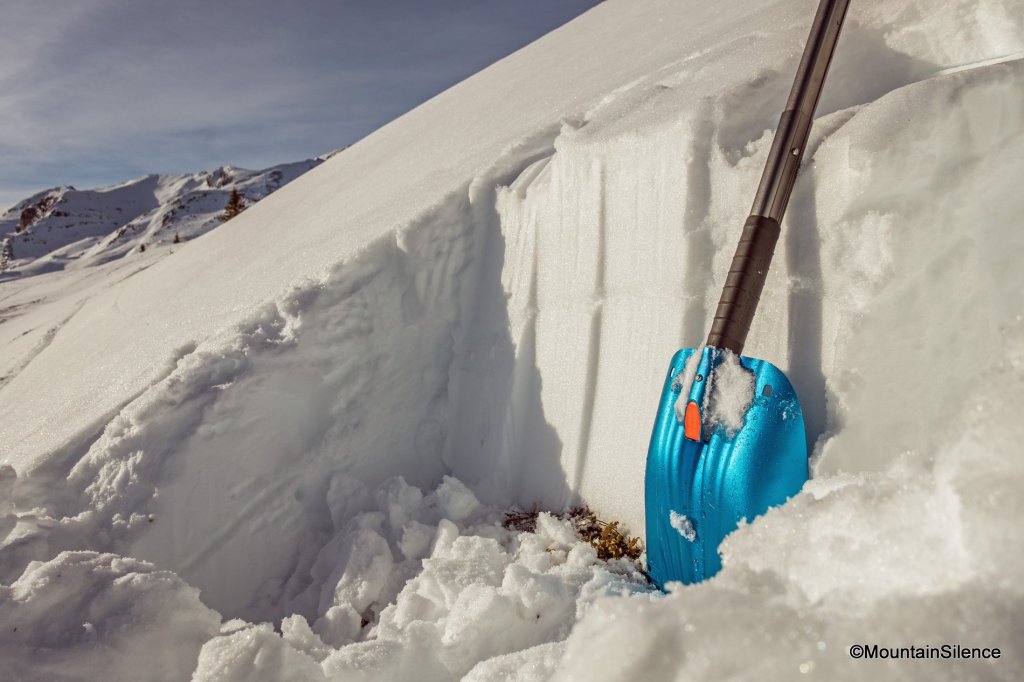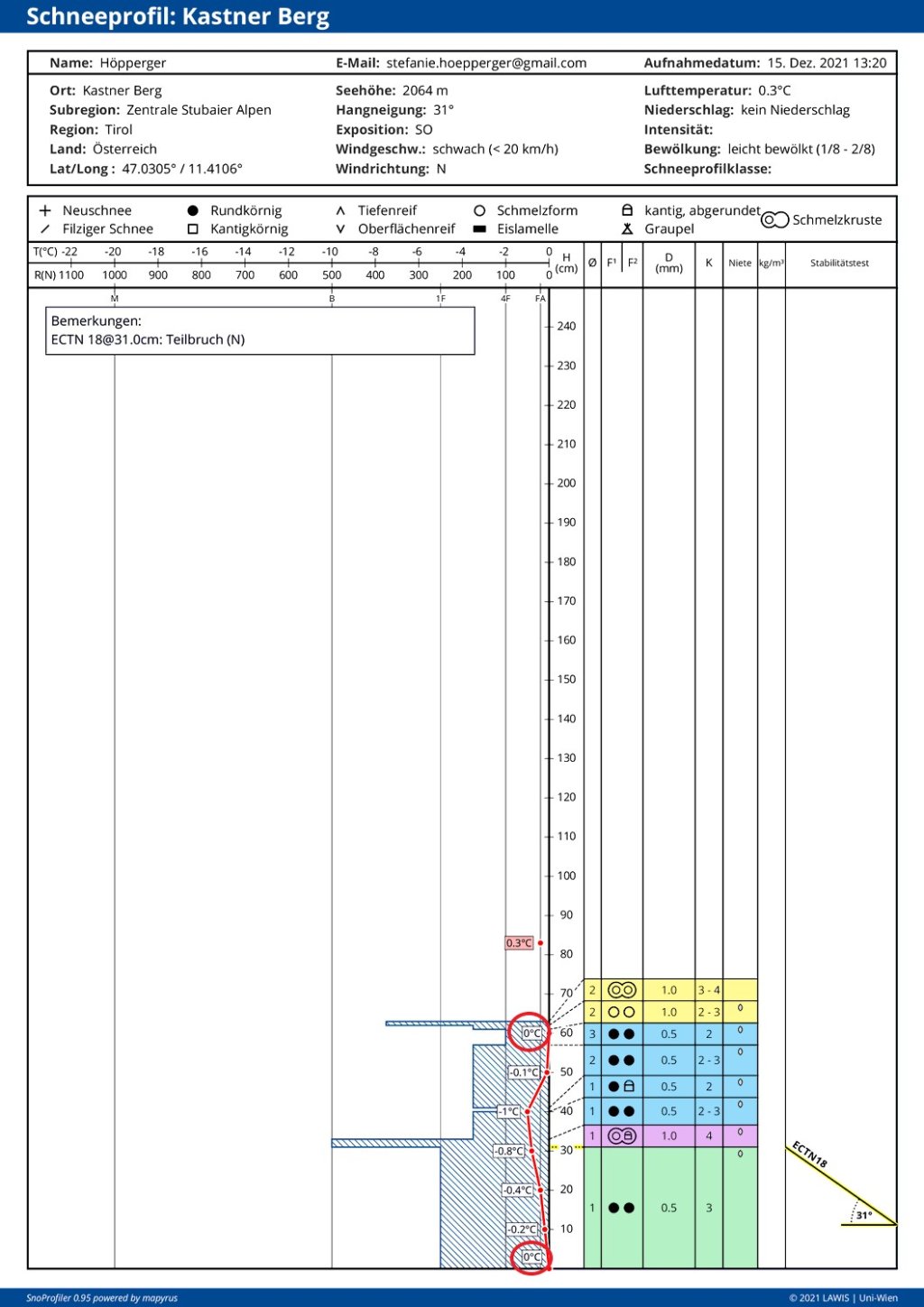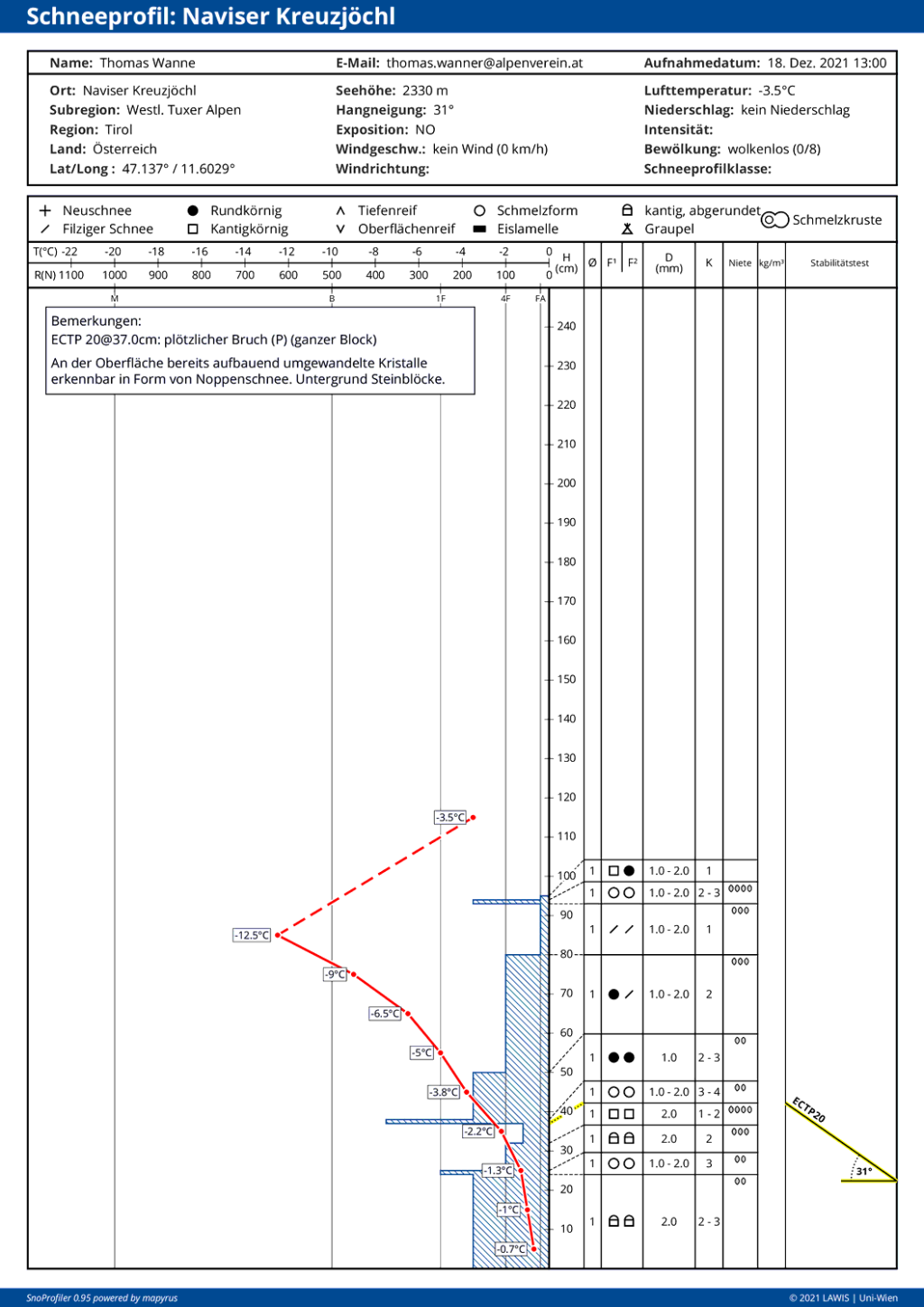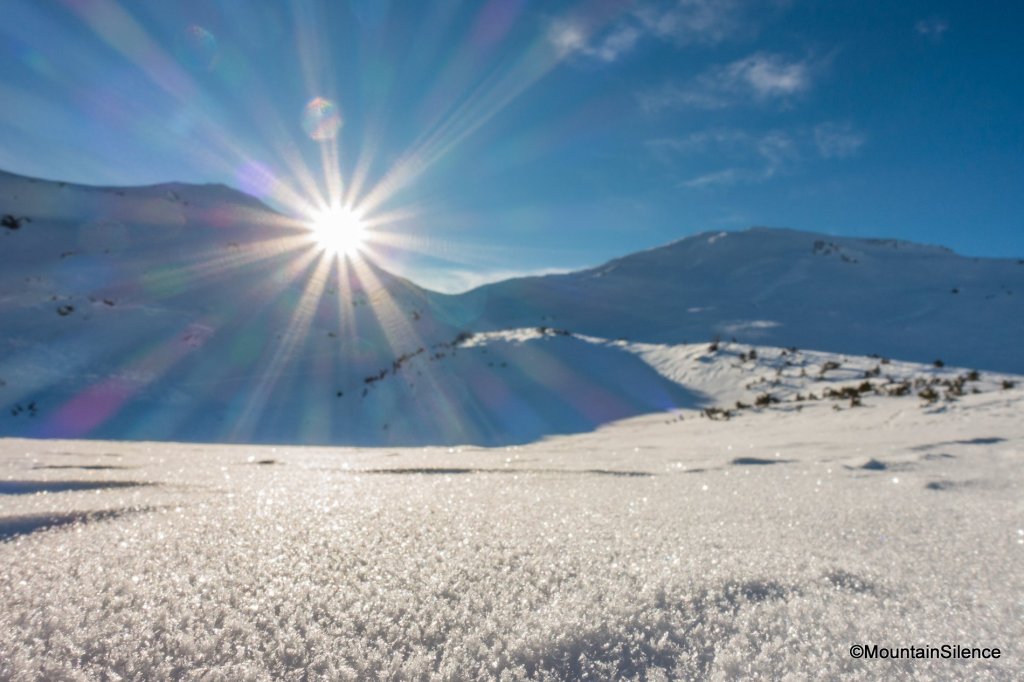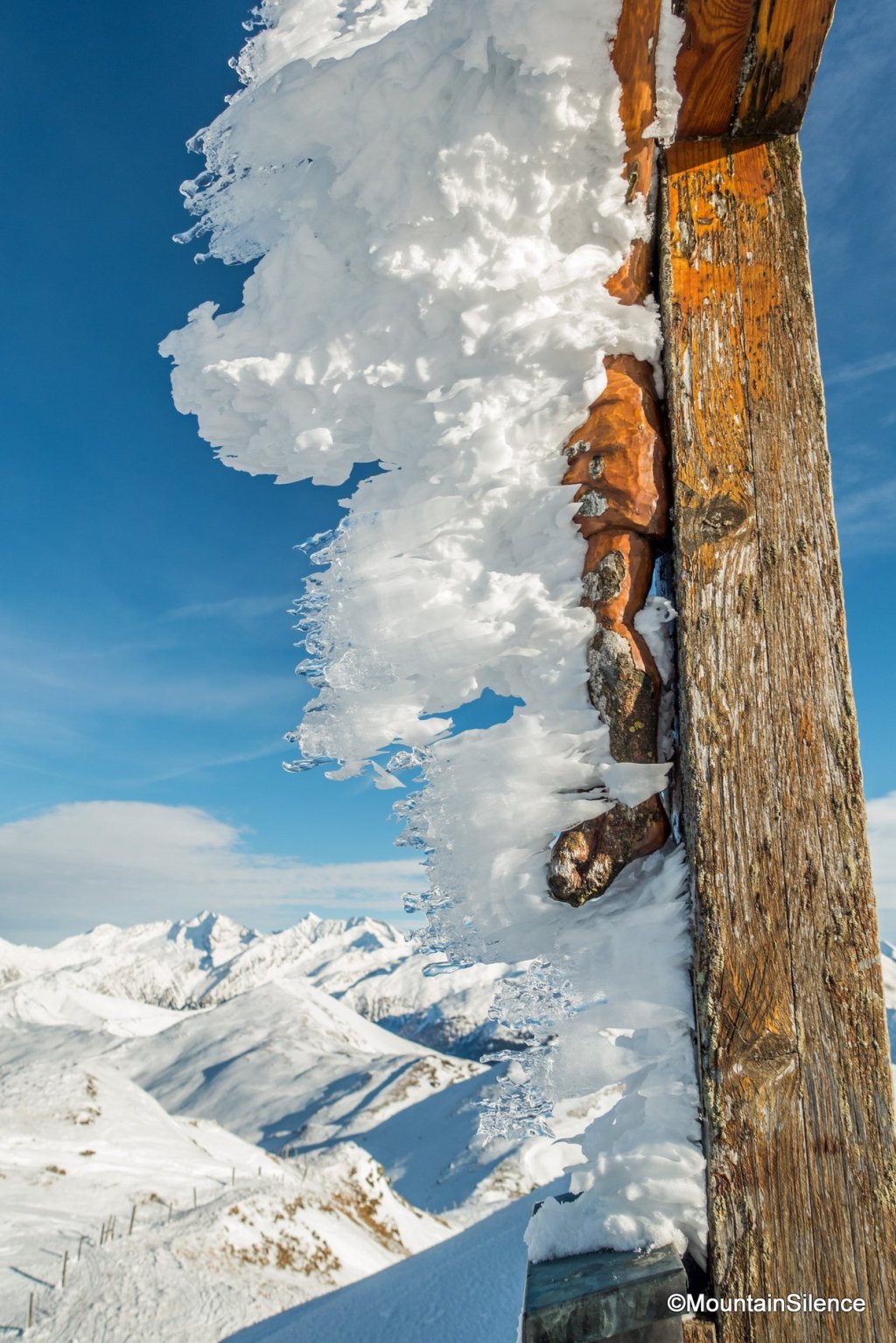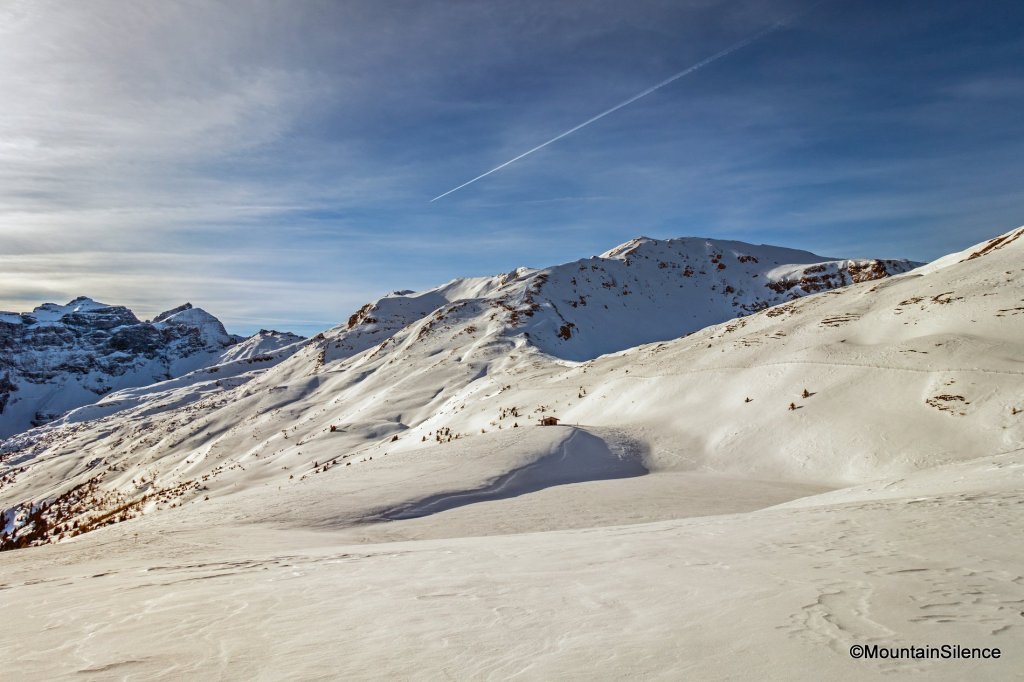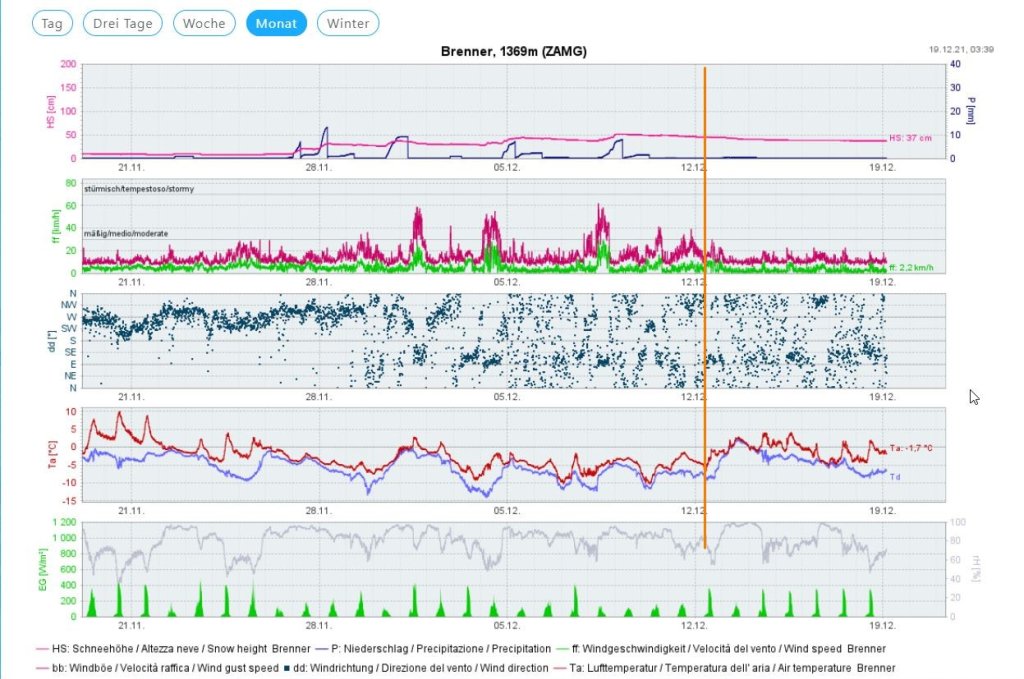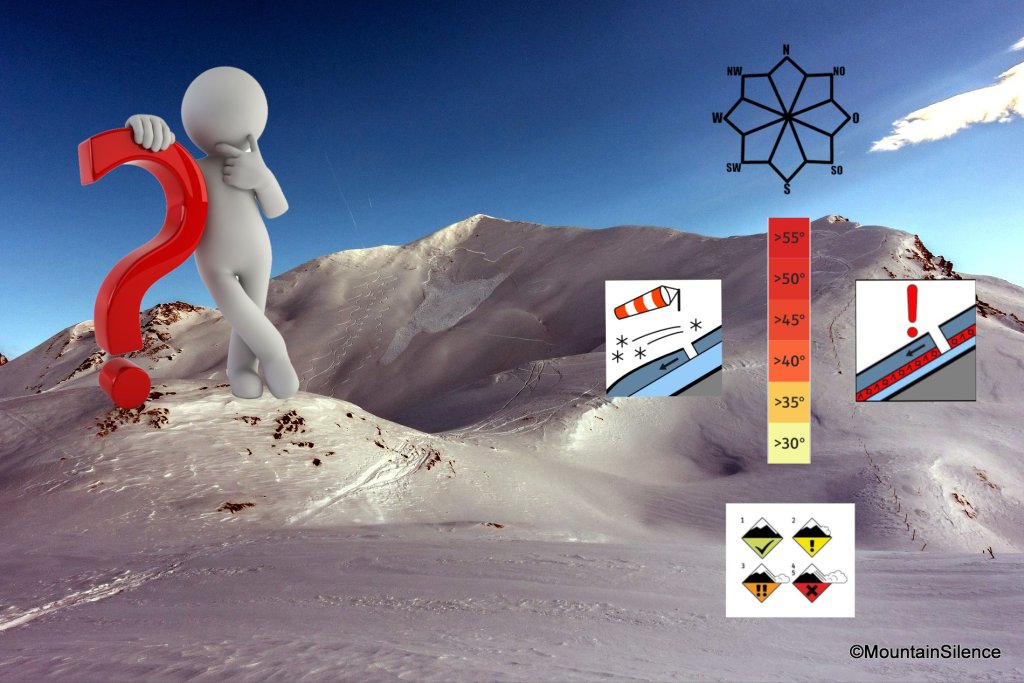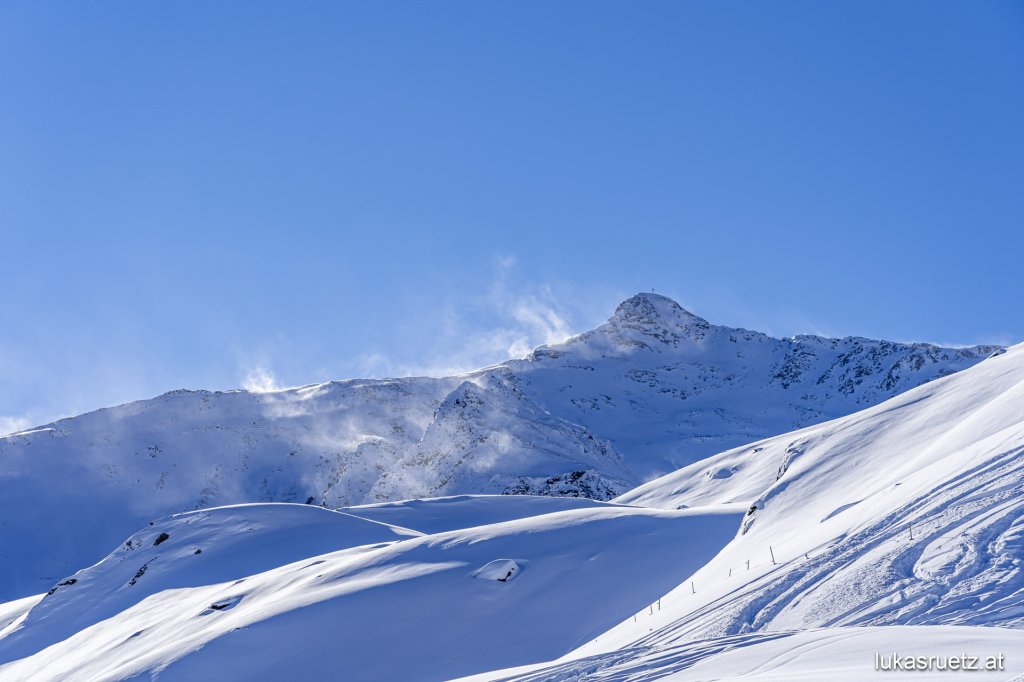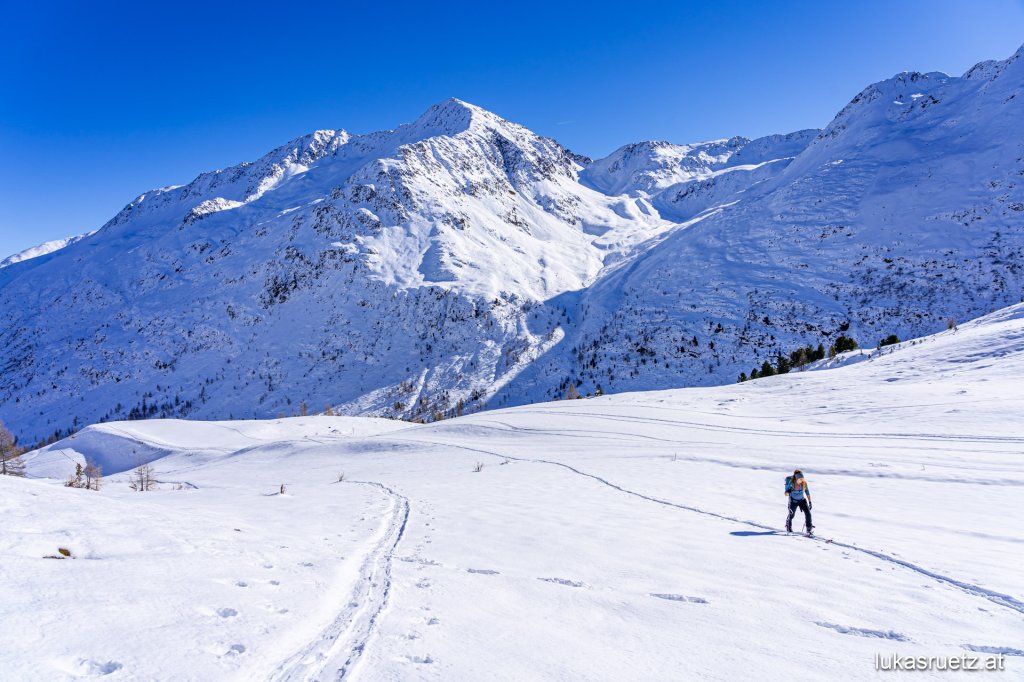The following days were perfect ski touring weather with sunshine and not too cold temperatures, only the snow quality left a lot to be desired.
In the terrain, the snow quality was very variable: there was a loose snow surface in places, but mainly on slopes with the predominant old snow problem, as well as "firn-like" conditions on steep sunny slopes (although you can't talk about firn yet), broken snow, a very changeable snow surface worked by the wind, slush at lower altitudes in the sun and snow that wasn't too bad to ski on in the forest area.
We take a look at a snow profile to see what happened to the snow cover as a result of the warming.
Profile 1:
Two days after the warm front moved in on 15.12.21, the snow profile was recorded in the central Stubai Alps, on Kastner Berg. We are at an altitude of 2064 m on an SE exposed, 31° steep slope. The recording time was 13:20, so the sunlight already had quite a strong influence on the snow cover.
The layers:
Yellow:
There is a melt crust on the snow surface, i.e. a crust consisting of melt molds. The individual grains are one millimeter in size and the crust is on the softer side with a hardness of 3-4 (one finger - pencil). This is due to the long exposure to sunlight, which has softened the crust through heat. The solar radiation and the prevailing plus degrees in the ambient air are responsible for the snow surface being slightly moist (2) (see first column).
The snow surface, which is still hard and frozen in the morning, warms up during the course of the day and the crystals begin to melt, increasing the water content. Snow melts when it reaches a temperature of 0 °C.
The crust was formed by the warm front from 12 to 13 December. The warm temperatures in combination with light rain up to approx. 2000 - 2300 m warmed and moistened the snow surface. In the following nights it cooled down again and the sky cleared up, resulting in an exchange of energy between the snow cover and the atmosphere (radiation). The surface cooled down again and the layers with a moisture content froze again. This process of melting and refreezing is repeated as long as temperatures are in the plus range and clear nights prevail. As soon as the temperatures during the day move back into the minus range, this changes, as the solar radiation alone is not yet strong enough to warm the snow cover in early winter.
Below the melting crust is a thin layer of melting molds. This layer is also slightly moist (2). The grains are one millimeter in size and with a hardness of 2-3 (four fingers-one finger), it is softer than the crust above.
